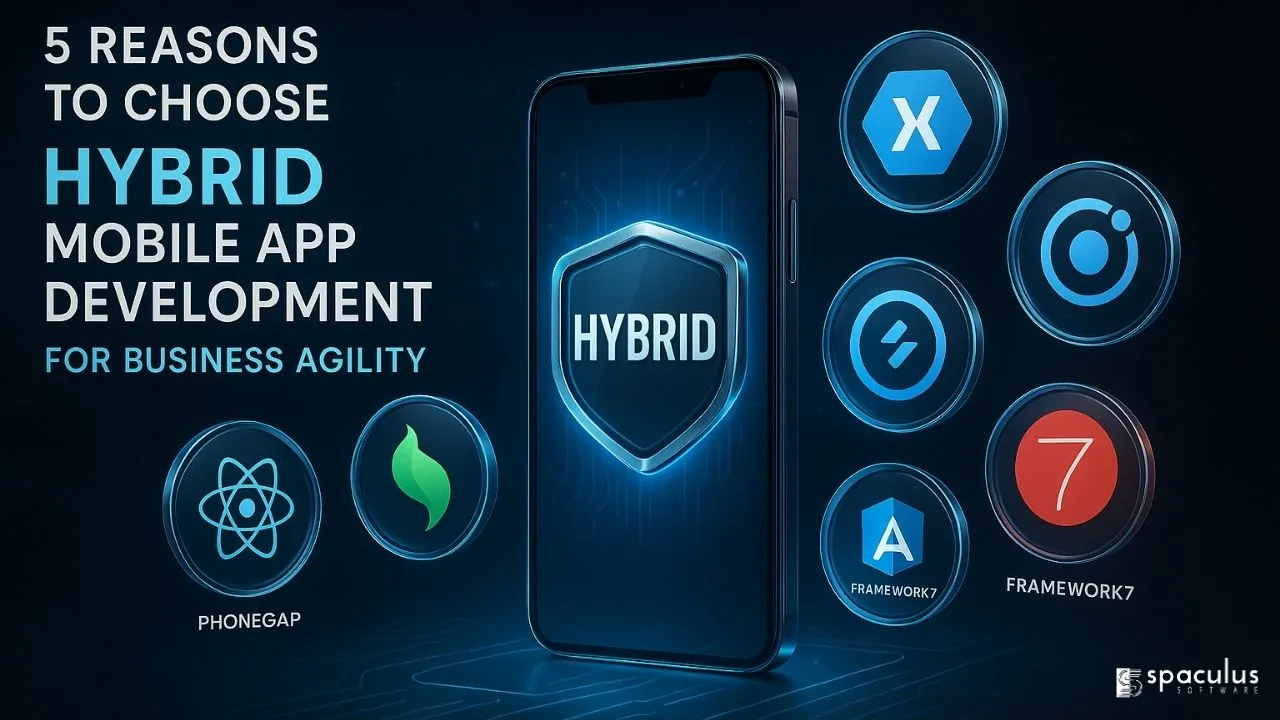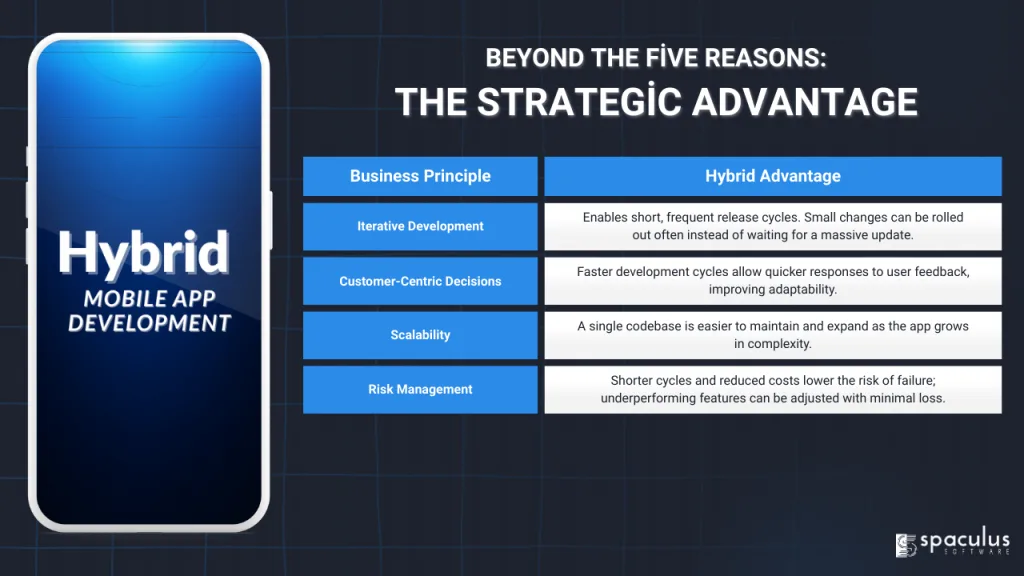
Business agility isn’t just about reacting quickly to change—it’s about being able to anticipate, adapt, and deliver faster than the competition. In today’s market, where trends shift overnight and customer expectations keep climbing, the way you build your mobile apps can directly influence your ability to stay agile.
Hybrid mobile app development has emerged as a powerful approach for companies that want speed, efficiency, and flexibility without compromising on quality. By combining the best aspects of web and native development, hybrid apps let businesses move faster, spend smarter, and serve customers better.
Let’s break down the five biggest reasons hybrid development is the right choice when business agility is your priority.
In competitive industries, being first often matters more than being perfect. The sooner you can launch, the sooner you can gather feedback, improve, and gain market share.
Hybrid app development allows you to build one codebase that runs on both iOS and Android. That means:
A faster time to market doesn’t just mean releasing your app earlier—it means having the capacity to respond to market changes, new trends, and user feedback without long delays. If a new opportunity emerges, hybrid gives you the freedom to act on it before your competitors.
Example scenario
Imagine a retail brand launching a seasonal flash sale app. With hybrid, the app could be ready for both iOS and Android users in time for the holiday rush, instead of missing the window by waiting for separate native builds.
Every business wants to cut costs without cutting corners. Hybrid development makes that possible.
Over time, these savings add up. The budget you save on development can be redirected toward marketing, customer support, or further product improvements.
Why this matters for agility
Agility isn’t just about moving quickly—it’s also about allocating resources wisely. Lower development costs give you more room to experiment, test new features, and adjust your product strategy without financial strain.
One of the core goals of agility is being able to serve a diverse customer base efficiently. Hybrid apps make this straightforward by enabling you to launch on multiple platforms simultaneously.
A consistent user experience means customers can switch devices or platforms without having to relearn the app. That reliability can improve retention rates and word-of-mouth referrals.
Example scenario
A fitness startup launches a hybrid app with tracking, meal plans, and workout videos. Whether users are on an iPhone or a mid-range Android device, the interface and functionality are identical—keeping the brand message clear and the experience predictable.
The work doesn’t end when your app launches. Regular updates are essential for fixing bugs, adding features, and staying compliant with app store requirements.
Hybrid development simplifies this process:
When your app is easier to maintain, your development cycle becomes more efficient. You can roll out improvements without delays, which helps you stay in tune with customer needs.
Why this matters for agility
Agile businesses thrive on feedback loops—build, measure, improve, repeat. Hybrid shortens that loop, making it easier to act on data quickly and keep your product evolving.
Hybrid used to have a bad reputation for poor performance and limited functionality. That’s no longer the case. Modern hybrid frameworks like React Native, Flutter, and Ionic have matured to the point where they can:
This balance means you can offer a feature-rich app without the overhead of maintaining two native codebases.
Example scenario
A travel booking app built in hybrid can still access location services to recommend nearby hotels, send push notifications for booking updates, and store offline tickets for areas with poor reception—all while running smoothly on both platforms.
Choosing hybrid isn’t just about technical benefits—it’s a business decision.
Here’s how hybrid aligns with core principles of business agility:

The hybrid approach gives you options. Your choice of framework should align with your business needs and your team’s expertise.
Each has strengths, so your decision should consider performance requirements, available talent, and long-term scalability.
For fairness, it’s worth noting hybrid isn’t perfect for every situation. If your app requires:
…a fully native approach might be better. But for most business applications—especially those focused on delivering services, content, or transactions—hybrid offers more than enough capability.
Hybrid mobile app development Company gives businesses the agility they need to compete in fast-moving markets:
Agility isn’t a buzzword—it’s a measurable advantage. And hybrid development is one of the most practical, cost-effective ways to build it into your business from day one.
Hybrid App Development